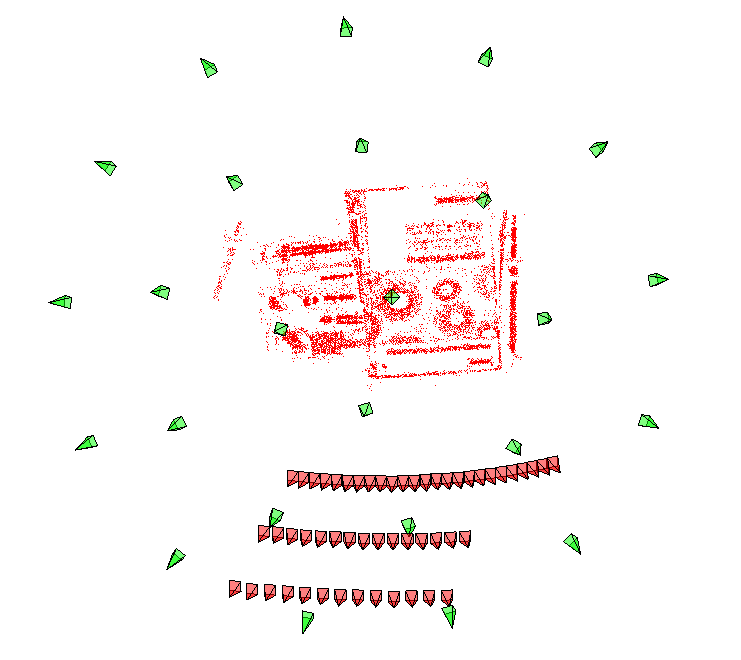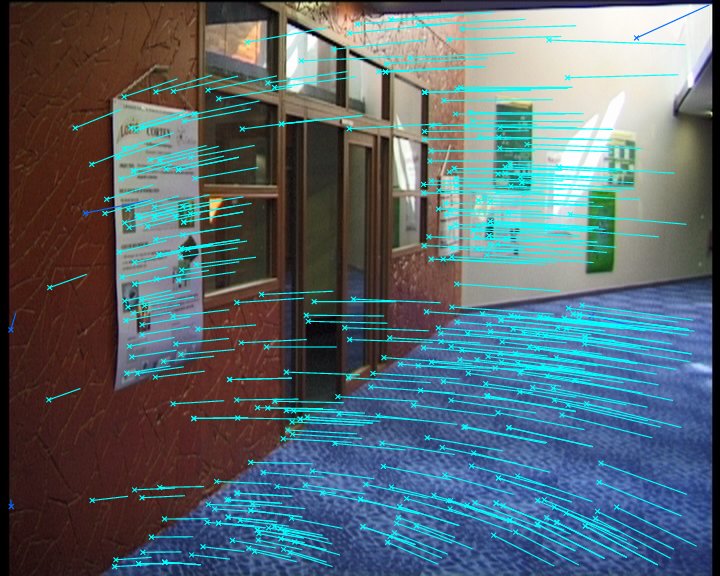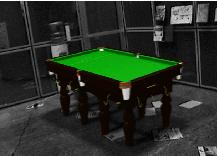|
Given a model acquired with Structure from Motion, with each 3D point represented
by a cluster of 2D descriptors extracted from images, our goal is to enrich
the cluster with descriptors computed from virtual viewpoints poorly represented
in the original sequence. Amethod for optimal positionning of the virtuals views has been proposes at BMVC 2016. This work was the object of P. Rolin's PhD thesis.
- Simulation de point de vue pour la localisation à partir d'un modèle non structuré, RFIA 2014

- Viewpoint simulation for camera pose estimation from an unstructured scene model, ICRA 2015

- Simulation de point de vue pour la mise en correspondance et la localisation Traitement du signal

- Enhancing pose estimation through efficient patch
synthesis, BMVC 2016

|
 Red: sequence used by SFM, green: virtual viewpoints
|









